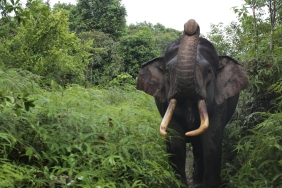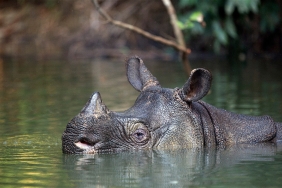WORLD TIGER DAY (JULY 29): SOUTHEAST ASIA'S DIFFERENT ACHIEVEMENTS TO DOUBLE TIGER POPULATION BY 2022
Hong Kong, July 29, 2021-Wild tiger numbers are declining in all tiger range countries in mainland Southeast Asia. It is estimated that these countries have fewer tigers than in 2010, the starting point for the 2022 population doubling target.
Over the past 25 years, tigers have become extinct in Cambodia, Laos, Vietnam, and there have been significant population declines in Malaysia, Myanmar, and to a lesser extent Thailand.
"Tiger populations in Southeast Asia are declining at an alarming rate despite a global agreement to increase tiger populations a decade ago. It is not too late to take urgent action on resource management of the last bastion of big cats that are icons of Asia," said Stuart Chapman, leader of WWF's Tigers Alive Initiative.
"Countries like India, Nepal and Russia have shown that with the right interventions, tiger populations can be restored, and in some cases, doubled in a relatively short time. With enough habitat, prey, and protection from poaching, tigers can make a comeback."
Snares remain the biggest threat to tigers in Southeast Asia. There are an estimated 12 million snares across protected areas in Cambodia, Laos, and Vietnam-countries where tigers are already locally extinct and setting an example for the rest of the region if no decisive action is taken to stop this crisis.
Other major threats include habitat loss due to infrastructure development, illegal logging, plantation expansion, illegal trade in tigers and tiger parts. The equivalent of 1004 whole tigers were captured between 2000-2018 in Southeast Asia, while 8,000 tigers are estimated to be in captivity in China, Laos, Thailand and Vietnam, which continues to weaken law enforcement and drive demand for tiger products.
Despite the overall decline in tiger numbers in the region, there have been some success stories such as anti-poaching patrols led by indigenous community members in Malaysia's Temengor Belum Forest Complex, which have contributed to a 94% reduction in active snares since 2017. In Thailand, tigers are spreading from Huai Kha Khaeng Wildlife Sanctuary to other protected areas thanks to strong protected area management and connectivity.
"Collaboration between governments, non-governmental organizations, corporate partners, and local communities has reduced poaching in Malaysia's Belum Temengor Forest Complex. Now we need to scale it up across the country and match it with strong political will and investment," said Sophia Lim, Executive Director and CEO of WWF-Malaysia.
"Restoring Southeast Asian tigers will also help mitigate climate change, protect water catchments, reduce the impact of natural disasters, and provide livelihoods for local communities."
Governments in Southeast Asia have an opportunity to reverse the decline of tiger numbers by supporting the Southeast Asian Tiger Recovery Action Plan that will be submitted to the fourth Asian Ministerial Conference on Tiger Conservation hosted by the Malaysian government in November. Included in the plan are increased budgets for protected areas including rangers on the ground, and high-level political oversight for tiger conservation through the establishment of a National Tiger Committee chaired by the head of government. Other elements of the plan should also include identifying opportunities for translocation and release of tigers in their former habitat, as well as addressing the illegal trade in tigers and tiger parts.
Some of these measures have been adopted successfully in other countries. India for example has implemented best practices in tiger conservation area management, with 14 sites approved under the Conservation Assured Tiger Standards (CA|TS)-a conservation measurement tool that sets standards for managing target species and benchmarks progress. There are currently 100+ CA|TS sites globally, covering more than 70% of the global tiger population, with registered sites in Bangladesh, Bhutan, China, India, Malaysia, Nepal and Russia.
--- FINISHED ---





